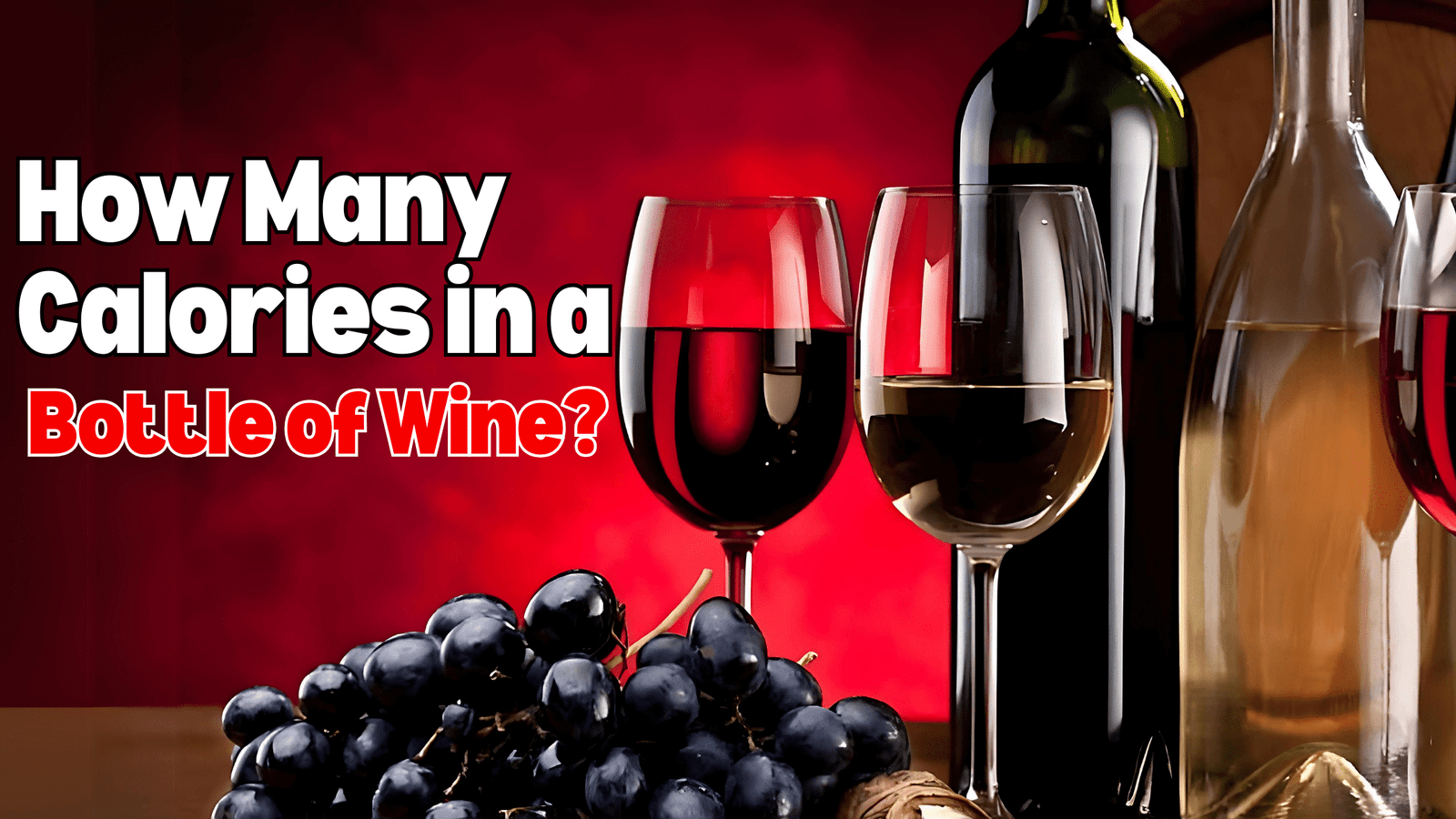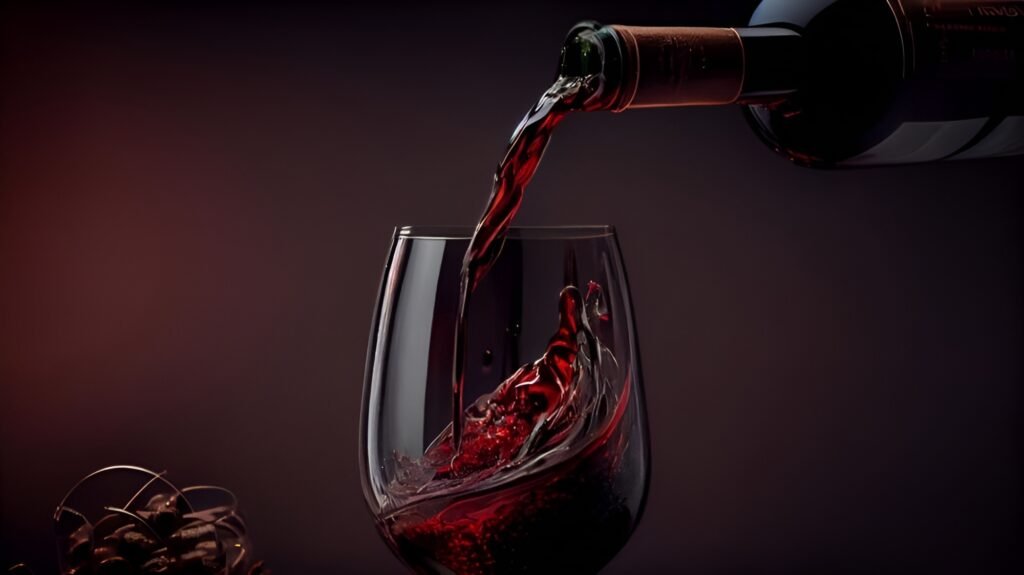
23 Sep How Many Calories in a Bottle of Wine? Types and Caloric Values
How many calories in a bottle of wine? Types and Caloric Values
If you are feeling overwhelmed, then there is nothing that a glass of wine is unable to fix. There is no other way to celebrate any occasion than a glass of wine. Wine stands as the most beloved beverage and the best accompaniment to numerous delectable foods. So, how many calories in a bottle of wine is often the query of several wine enthusiasts.
So, are you curious about your weight and need to find out the number of calories present in a bottle of wine? We will make it easier for you. Before you overindulge in wine, know its caloric content. In our post today, we will learn more about this context.
4 Types of Wine and Their Caloric Values
The calories in wine are often overlooked by wine lovers. The following are four popular wine types and their calories per serving.
Red Wine
Many people love red wine because of its bold flavour and rich alcohol profile. However, a 750ml bottle generally contains between 600 and 675 calories, depending on its variety and alcohol content.
- Pinot Noir: About 620 calories per bottle.
- Cabernet Sauvignon: Around 625-650 calories per bottle.
- Zinfandel: Between 600 and 675 calories per bottle

White Wine
Henceforth, how many calories in a bottle of white wine? White wines typically have lighter and lower content of alcohol as compared to the reds. Therefore, it results in fewer calories in each bottle. However, there are variations involved as it relies on the distinctive wine.
- Chardonnay: About 600 calories per bottle.
- Sauvignon Blanc: Mainly ranges from 575 to 600 calories.
- Riesling: Around 580 calories per bottle.

Rosé Wine
It is the wine category that stands between the red and white wines. It is determined through the calorie and alcohol content. Therefore, it is light and has an inviting taste that complements the moderate count of calories.
- Dry Rosé: Generally comprises between 500-525 calories per bottle.
- Sweet Rosé: Due to their higher sugar content, sweet roses generally have between 550 and 625 calories per bottle.

Sparkling Wine
Champagne, Cava, and Prosecco are mainly sparkling wines. Therefore, they have a festive feel and a massive range of caloric counts, which depend on their alcohol and sweetness levels.
- Brut (dry) Champagne: Contains about 500-550 calories per bottle.
- Prosecco: Typically 500-525 calories per bottle.
- Demi-Sec (sweeter) Champagne: Ranges from 600-700 calories per bottle.

What Factors Determine the Caloric Content of Wine?
The number of calories found in any bottle of wine depends on several factors, including the following. These include:
Alcohol Content
Wine is composed mainly of alcohol, which provides about seven calories per gram. Wines with an increased alcohol percentage usually have more calories than the other wines. For instance, red wines, with a possible alcohol content of 13-15%, will serve more calories than white wines, whose alcohol content is only 11-13%.
Residual Sugar
The level of residual sugar defines the wine’s sweetness, and only the remaining sugar is fermented in this process. Foods that are sweet, including the dessert wine, Moscato, and sweeter rosé, contain more sugar, meaning that they have more calories. Dry wines, as you may have noted, contain less amount of residual sugar and thus have lower calorie content.
Serving Size
On average, a bottle of wine yields about five servings, and, typically, these servings comprise 5-ounce wine. Bottle of wine how, many calories differ based on the type, but if you pour more into your glass, you will very easily take in many more calories than you bargained for. That way, controlling the pour can help one monitor their daily calorie collection.
How to Enjoy Wine Without the Extra Calories?
When it comes to your wine, you do not have to completely cut out your glass of wine because of the calorie content. How many calories are in a bottle of wine can vary, but here are a few tips to help you enjoy wine without overindulging in calories:
Choose Wines with Lower Alcohol Content
Choose wines that contain a lower percentage of alcohol by volume (ABV). That is why ‘light’ wines with 11-12% volume ration contain fewer calories than, for instance, ‘strong’ wines with 14-15% volume ration.
Stick to Dry Wines
Dry wines contain less sugar or glucose and, hence, fewer calories. For red wine drinkers, go for wines like Pinot Noir or Cabernet Franc, as the two don’t contain much sugar.
Watch Your Portions
This is especially true as one can be quick to pour more than the recommended amount of 5 ounces when drinking wine. How many calories in a bottle of red wine can differ, so try to control the size of portions used in serving since this may lead to taking more calories than intended.
Alternate with Water
One very effective procedure for cutting back on wine consumption without feeling limited is to drink wine and water in equal measure. This minimally allows you to consume fewer calories and, at the same time, helps to maintain proper hydration levels.
Conclusion
A glass of red wine once in a while is harmless, even if you’re watching your weight. Knowing how many calories in a bottle of wine are in various kinds of wine enables you to savor your favorite beverage with greater awareness. Whether you choose a dry white, a crisp red, or a festive sparkling wine, the amount of calories in each can vary greatly depending on residual sugar and alcohol level. For those who enjoy wine, the best course of action is to drink in moderation and to be mindful of the alcohol, sugar, and calorie content.
Frequently Asked Questions
How many calories are in a glass of wine?
The standard glass of wine contains around 120 to 125 calories of white wine, 125 to 150 calories of red wine, and 100 to 120 calories of sparkling wine. The actual amount depends on the kind and alcohol content.
Does the age of the wine affect its calorie content?
The age of the wine never impacts the caloric content. The alcohol content, level of sugar, and serving size are the key factors determining the calories present in wine.
How can I reduce my calorie intake from wine?
To minimize caloric intake, choose wines with less alcohol content, stick with dry varieties, and control serving size. You should also alternate wine consumption with water consumption, which is less.

No Comments